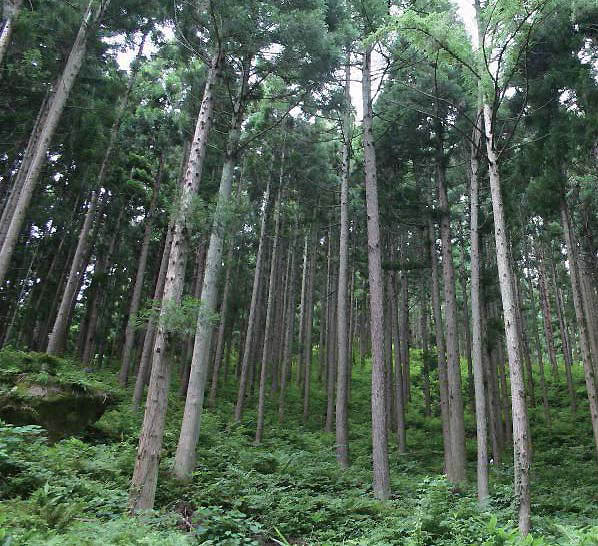Home > Research > Research Results > Research Results 2017 > Importance of surrounding broadleaf forests for seedling diversity in monoculture plantations
Update:December 7, 2017
Main content starts here.
Importance of surrounding broadleaf forests for seedling diversity in monoculture plantations
| Article title |
Thinning affects understorey tree community assembly in monoculture plantations by facilitating stochastic immigration from the landscape |
|---|---|
| Author (affiliation) |
Ryo Kitagawa(a), Mitsuru Ueno(b), Takashi Masaki(c) |
| Publication Journal |
Journal of Applied Vegetation Science, 20(4):673-682, August 2017, DOI: 10.1111/avsc.12327( External link ) |
| Content introduction |
Global biodiversity is declining due to the loss of primary forests; thus, preserving biodiversity even in monoculture plantations is important. An effective method for enhancing the biodiversity of seedlings on the forest floor is thinning of the canopy trees in plantations. Two factors affect the assembly of forest floor seedlings after thinning: deterministic environmental parameters such as amount of sunlight and less predictable parameters such as stochastic seed immigration. To clarify the relative importance of each factor, we evaluated changes in biodiversity indicators exemplified by the number of seedling species before thinning and 2 and 5 years after thinning at 49 sites of Japanese cedar monoculture plantations in Yamagata prefecture. Further, we investigated the factors that influenced these changes. Three main conclusions were given by the results of our research: (1) The species richness of seedling decreased as the total basal area of Japanese cedar increased both before and after thinning. This indicates that as less light reaches the forest floor, biodiversity decreases. (2) After thinning, the species richness of seedling had changed only slightly compared with that before; thus, it appears that the number of species lost through thinning activities was compensated by supplementation of species through seed immigration. However, the species composition of the seedlings greatly changed after thinning. This suggests that new tree species immigrated from the surrounding landscape after thinning. (3) The species richness of seedling on the forest floor was enhanced as the surrounding area of broadleaf forests increased. Two years after thinning, the influence of the surrounding landscape had expanded to a radius of 600 m. This indicates that when the canopy of monoculture plantations is subjected to thinning, seeds from surrounding broadleaf trees can serve as a source that increases the forest floors diversity of seedlings. Thinning of monoculture plantations fundamentally changes the composition of seedling species on the forest floor and is anticipated to increase the biodiversity of future tree species. However, the effect would only be apparent where broadleaf forests are abundantly distributed, allowing them to serve as a seed source and covering an extensive surrounding area.

Photo. One of the investigated Japanese cedar monoculture plantations 5 years after thinning. When there are broadleaf forests in the surrounding area, the effect of thinning on preserving biodiversity is more pronounced. |
Copyright © Forest Research and Management Organization. All rights reserved.
